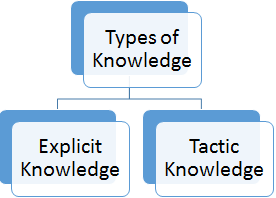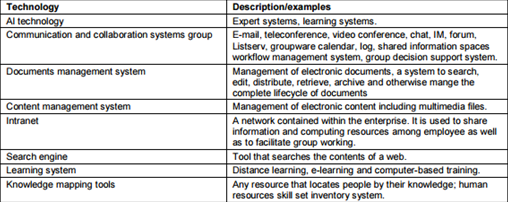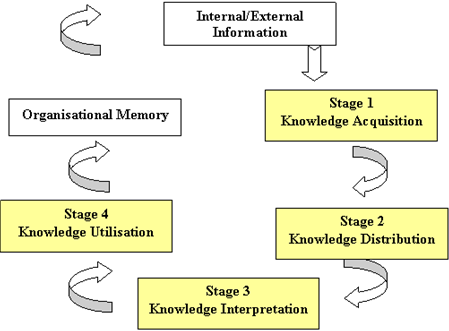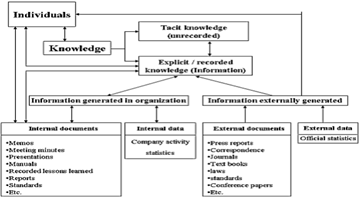Bonanza Offer FLAT 20% off & $20 sign up bonus Order Now
Knowledge Management also known as KM is a business activity that includes two major aspects. The first aspect includes the treatment of the knowledge that is used in all of the business activities and the policies, vision and objectives across all the levels in Huawei. The second aspect of KM makes an attempt to establish a direct connection between the intellectual assets of Huawei and the business results derived out of the same (Barclay and Murray, 2016).
There are two types of knowledge that exists in the structure of knowledge management for Huawei.

Organizational KM Theory
Organization theory of Knowledge Management is based upon the practices of a particular organization. The theory involves an on-going process of management and maintenance of the knowledge base through the agents. In this theory, Huawei itself acts as an agents and adds to the knowledge base with its information collected at all levels and through the interaction with other partner and collaborated organizations.
This theory and its application attempts to form a bridge between the Huawei’s capability to adapt and the existing processes and practices. It results in a number of meaningful outputs such as a knowledge base comprising of domain specific knowledge, knowledge validation criteria along with specific resources to implement the same.
Knowledge base in Huawei
The knowledge base of Huawei is made up of a number of different entities. At the very first level are the resources or the people in the form of individuals and groups that are associated with the organization contribute to the knowledge base. Next are the analytical, structural and global properties that are derived from the data related to the organization and the same aid in the development of the knowledge base. There are also other components and elements that help in the formation of the knowledge base such as descriptive knowledge, predictive knowledge and knowledge about the impact.
Processes in KM Theory of Huawei
There are a number of processes that are followed in this theory of KM. These processes in terminology followed by Huawei are described as the business processes which refer to a series of steps directed to convert a set of inputs to a set of outputs. The processes are listed as follows:

The Organizational theory of KM applies to the study of local project manager in case of Huawei by considering the various practices that are followed in a particular organization and the variance of the same from the organization that has a Chinese project manager.
Ecological KM Theory
The Ecological Knowledge Management theory focuses on the social networks of the people i.e. the level of interaction between the individuals, relationships and learning outcomes rather than the technical aspects. In this particular theory, the knowledge base is developed not by a mere study of people, their interactions and their relationships but also on the actions that influences the same. The basic mode of survival in this particular approach is adaptation instead of optimization (Malhotra, 2016).
This theory applies to the study of Huawei local project manager and that of Chinese project manager by analyzing the level of interaction at all the levels that is between the individuals, with the groups and with the third parties as well. Also, the actions that influence the discussions along with the relationships also account for the valuable outputs.
Techno-centric KM Theory
Technology is a significant player in any organization in the present era. As the name suggests, techno-centric KM theory has its base as the technology and the advancements associated with the same. The flow of knowledge and the storage of the same to form a knowledge base rely on the technological processes that are followed. It also includes the impact that the technology puts on the people along with the level of knowledge sharing (Study.com, 2016).
Tools to access knowledge
These are the tools which are used to access the explicit knowledge that is the formal rules, processes and procedures associated with the organization. For instance, Convera is a tool to access knowledge on the basis of indexing system in order to classify the expertise in an enterprise.
Tools for semantic mapping
These are the tools which aid in the organization of the information along with presentation, analysis and decision making associated with the same. For instance, Anacubis is a visual research and analysis tool for the professionals. Visual discovery, visual representation and analysis of the information are performed by this tool.
Tools for knowledge extraction
These tools perform data mining on the information collected to find out the relationships between the several elements. For instance, ClearForest Text Analysis Suite is a tool that applies the techniques of business intelligence to derive the meaningful information from the chunks of information collected from various data sources.
Tools for collaboration work
These tools empower groups to all inclusive offer committed spaces for dealing with the undertaking lifecycle; altering and distributed materials; leading live discourses and co-operations; and keeping up a vault of materials connected with each progression of the procedure. QuickPlace is an example of such a tool.
Tools for expertise localization
There are a number of different entities and elements associated with an organization. These tools help in finding out the knowledge holders at different locations. ActiveNet is an example for a tool that performs expertise localization in a fantastic manner (Ghani, 2016).
IT Tools
There is a great revolution in the field of IT over the past few years. Knowledge Management has also benefitted from the same with the introduction of a number of web based tools for KM. These tools are based on a specific technology and system associated and also on the type of knowledge. Some of the IT tools for KM are listed below.

IT Tools for Knowledge Management

KM Tools on the basis of Knowledge Type
Traditional Knowledge Management Techniques
Brainstorming
This is the technique in which a number of participants interact with each other to come up with a solution to a problem. In Huawei, this technique can be applied with the discussion in which Chinese and Local PM come together on one single platform and initiate the exploration of the ideas. For a successful brainstorming session, there should be presence of a facilitator to conduct the session along with active participants that consider the ideas of fellow participants with healthy discussion (Young, 2016).
Communities of Practice (CoP)
These are also referred to as knowledge communities or knowledge network. This technique brings together people from different teams or groups on one platform to share their knowledge and experience with each other. This could means that two teams, one headed by a Chinese PM and other headed by a local PM can come together for creating knowledge network.
Face-to-face interaction
This technique involves one on one conversation and formal interactions between the employees to share the tactic knowledge that is the knowledge that comes from the skills and experience (Egbu, 2016).
Advanced Knowledge Management Techniques
Data Mining
Data mining is the process of analyzing data collected from various sources to form statistics and meaningful relationships from the same. It is one of the widely used components of business intelligence which applies to knowledge extraction and knowledge management as well. There are a number of data mining tools commercially available. This technique can be applied in Huawei to collect data from the projects headed by Chinese and local PM to come up with statistics and meaningful information.
This system makes use of a knowledge case library that includes cases and instances from various sources. In the process, a similar case is looked for in the case library to understand the approach and techniques followed and the same are applied in the ongoing case. The reasoning behind the case is the basic adaptation element that is used in this technique.
Group Decision Support Systems
These are the systems that rely upon the learning outcomes and decision making activities of an entire group rather than individuals. For instance, a project headed by the Chinese Project Manager would involve different set of rules for decision making and the one managed by a local PM would be different.
Artificial Neural Networks
These are the techniques and the tools that have their base as the artificial intelligence and its components. Best principles out of the best practices are devised with the help of pattern study and pattern recognition.
Semantic Search Engines and Link Machines
The search engine creates a semantic network of a number of keywords that are entered to conduct a particular search activity. This is then followed by the text coding and creation of a semantic table.
Knowledge Management plays a crucial role in the learning and development in the corporate sector as well as the development sector.
Huawei has significant assets in terms of knowledge and information. Various stages and generations of KM have evolved over the years to contribute to the learning and development. The first generation of KM promoted knowledge sharing in Huawei to allow the same to run more efficiently and smoothly (Hovland, 2016).
The second and more advanced generation of KM enabled the learning and development in Huawei by creating new knowledge that provides a competitive edge among the various entities in the market. For instance, strategies and techniques of knowledge management are applied in case of the study of Huawei and Chinese Project Manager to learn the required traits of the managers.
An association's knowledge management framework can go about as a hierarchical learning system to bolster worker activity to close execution crevices and permit the association to achieve its coveted execution results. Knowledge picked up from the work experience empowers representatives to learn new knowledge, which can then be put away by the association. To comprehend learning inside an association it is important to see how knowledge is gotten to; how it is translated and utilized as a part of basic leadership; and how the sort of choice impacts the kind of learning and knowledge put to use by those inside the association.
Continuous Improvement is an activity in Huawei that is adapted to achieve flexibility and responsiveness. It leads to improvement in the customer relationships and also aids in the cost efficiency by putting in a constant effort for improvement.
Knowledge Management plays a significant role in the area of Continuous Improvement for Huawei. The following cycle displays the elements of KM that aid in the continuous improvement.

Stages of Knowledge Management for Continuous Improvement
This is stage of acquiring or collected the knowledge relevant to the organization from internal as well as external sources or from different teams headed by Chinese and local PM. A team of dedicated resources is deployed to perform this activity for the organization. Also, an extensive training is provided to the employees to deliver the best in this area as it is a base for further stages (Tlainc.com, 2016).
It is the process of communicating what has been collected in the previous stage. The most common out of them all is the structured approach which makes use of formal meetings, emails and discussions to communicate the information.
This is the stage in which the information is given a meaning. The various levels and departments in Huawei utilize the same piece of information in different manners. This stage determines all of these ways of interpretation.
It is associated with the interpretation of occasions and builds up the mutual comprehension of those encounters. Knowledge might be utilized to enhance current abilities, items or administrations or an inclination might be given to knowledge that will help with the advancement of these. The availability of data will be a determinant on how data can be utilized as a part of any given circumstance. In the accompanying segment a more point by point examination of how an association stores knowledge is given.
This refers to the internal source present within Huawei. This type of knowledge is stored in the form of physical records and files.
Document Management is one of major tasks that need to be performed with perfection for any organization and the same is in case of Huawei. Proper handling and management of the documents along with the ability to maintain the confidentiality, integrity and availability of the information present within them is also of prime importance.
Document Management and Knowledge Management are two different subjects, but they are highly inter-related with each other. The processes in both of these activities begin with an action that is undertaken by people to create documents or generate pieces of information to create knowledge.

Relationship between Document Management and Knowledge Management
The following table illustrates the concept and relationship between Knowledge Management and Document Management.
|
| Document Management | Knowledge Management |
| Definition | It is the process of managing the paper and the electronic documents associated with Huawei with a process that may be manual or automated in nature. | It is the process which makes the knowledge accessible to the people in an organized manner. |
| Objectives | To fulfill the objectives of Huawei by generation of more ROI and to keep the information secure. | To fulfill the objectives of Huawei and to share the knowledge with all the entities. |
| Functions | Management of the paperwork by keeping a check on each and every activity associated with the paper based documents. To manage the electronic format of the documents. | Creating a knowledge base by making using of tactic and explicit knowledge and make the same available for the people present in an organization. |
| Focus | To make use of the recorded information present with Huawei | Development of Huawei as a whole |
| Relevant Disciplines | Information Technology Components and Knowledge Management | Information Management and Document Management |
Knowledge Management aids Document Management in order to promote the business efficiency and effectiveness through the use of best practices and also with the ability achieve business results quickly and accurately. Information is the base of both document and knowledge management which connects the two activities and forms a relationship between them as well (Chen, Snyman and Sewdass, 2016).
Systems thinking and Knowledge Management also have a high level of inter-relation between them. Systems thinking provide the ability to acquire information about each component of the system and the way the same behaves in an integrated environment. Knowledge Management aids the same by applying the practices to the features and learnings about the system.
For instance, if a Project Manager is allocated a project of a web based solution, then he/she would have to understand the project as a whole and also the components of the entire system such as required inputs, required outputs, network details and likewise. Knowledge management provides further elaboration of the same by suggesting the best practices to follow, defined rules and also the tactic knowledge that comes with experience regarding such a system.
Questionnaire to get general information from Chinese PM and Local PM for comparing
| 1 | How many people are employed in Huawei? |
| 2 | How many projects have you worked on as a Project Manager? |
| 3 | What is your total work experience? |
| 4 | How long did it take for you to become a Project Manager? |
| 5 | How many organizations have you worked with? |
| 6 | What were the smallest and largest team sizes for the projects that you have worked on? |
| 7 | What is the domain area of Huawei and for the majority of the projects you have worked upon? |
| 8 | Have you worked on multiple part-time projects at the same time? |
| 9 | Have you worked on internal as well as external projects? |
| 10 | How do you estimate the approach to be followed while managing the project? |
| 11 | What is the difference between management and leadership? |
| 12 | Do you consider yourself more of a technical or a functional project manager? |
| 13 | How do you differentiate between project and program management? |
| 14 | What are your most-loved aspects about being a project manager? |
| 15 | Why did you prefer management over other areas of work? |
| 16 | Describe the most challenging project that you have worked on. What steps did you take to overcome the challenges? |
Questionnaire to get general information from Chinese PM and Local PM for comparing
| 1 | What are the business objectives and vision of Huawei as an organization? |
| 2 | What are the legal and regulatory policies followed in Huawei? |
| 3 | What is the Code of Conduct and Ethical Compliance structure followed in Huawei? |
| 4 | What is the most preferred project management methodology followed in Huawei? |
| 5 | What are the KPIs for the organization? |
| 6 | How important are the communication skills for a resource and especially for the Project Manager? |
| 7 | What steps did you take to work on the communication skills? |
| 8 | How many projects on an average do you work upon on a per quarter basis? |
| 9 | Are you happy with your growth as an individual in the organization? |
| 10 | Do you believe that your goals and the goals of the organization are at the same page? |
| 11 | What are the steps of the audit control procedure followed in the organization? |
| 12 | What are the project management tools that you use? |
| 13 | How do you form project budget and project schedule? |
| 14 | What are the performance metrics that you use to make sure that the project progress is correct? |
| 15 | How do you assess the risks during the project timeline? |
| 16 | What is the approach that you use with the resource during communications and discussions? |
The business and the way it is carried out is changing with time. Traditional practices of project management are no longer applicable and appreciated by the team. With the change in the methodology, it is essential for the Project Managers to bring a change in their practices as well to monitor and manage their teams from a business KPI perspective. Passive role shall be replaced with an active role by a manager and the team members must be encouraged to be at par with the cutting edge technology. Instead of relying on the age old formula of knowledge is directly proportional to experience, a project manager must bring all the resources at the same level of knowledge by promoting interactions, trainings and the willingness to learn.
There are a number of practices which may lead to a failure of project due to mismanagement or poor management by the Project Manager which are as listed below:
The Project Managers in the present era must be well aware of the objectives of the organization as a whole and of the project as well. Knowledge about their team members, skills sets, required responsibilities and ability to learn must also be of prime importance for the Project Manager.
Barclay, R. and Murray, P. (2016). What is knowledge management?. [online] Available at: http://www.providersedge.com/docs/km_articles/what_is_knowledge_management.pdf [Accessed 31 Jul. 2016].
Egbu, C. (2016). Techniques & Technologies for Knowledge Management. [online] Available at: http://www.knowledgemanagement.uk.net/resources/WP3%20Interim%20Report.pdf [Accessed 31 Jul. 2016].
Firestone, J. (2016). Basic Concepts of Knowledge Management. [online] Available at: http://www.dkms.com/papers/kmbasic.pdf [Accessed 31 Jul. 2016].
From Start Up To Grow Up. (2014). Understanding the Theory of Knowledge Management. [online] Available at: http://fromstartuptogrowup.com/underatanding-theory-knowledge-management/ [Accessed 31 Jul. 2016].
Ghani, S. (2016). Knowledge Management: Tools and Techniques. 1st ed. Documentation Research and Training Centre Indian Statistical Institute, Bangaluru-560 059.
Malhotra, Y. (2016). Information Ecology and Knowledge Management. [online] Available at: http://www.brint.org/KMEcology.pdf [Accessed 31 Jul. 2016].
Study.com. (2016). Knowledge Management: Theory & Strategies | Study.com. [online] Available at: http://study.com/academy/lesson/knowledge-management-theory-strategies.html [Accessed 31 Jul. 2016].
Young, R. (2016). Knowledge Management Tools and Techniques Manual. [online] Available at: http://www.apo-tokyo.org/00e-books/IS-43_KM-Tools_and_Techniques_2010/IS-43_KM-Tools_and_Techniques_2010.pdf [Accessed 31 Jul. 2016].
Chen, X., Snyman, M. and Sewdass, N. (2016). Interrelationship between document management, information management and knowledge management. 1st ed.
Hovland, I. (2016). Knowledge Management and Organisational Learning: An International Development Perspective. [online] Available at: https://www.odi.org/sites/odi.org.uk/files/odi-assets/publications-opinion-files/170.pdf [Accessed 1 Aug. 2016].
Tlainc.com. (2016). Journal of Knowledge Management Practice,. [online] Available at: http://www.tlainc.com/articl170.htm [Accessed 1 Aug. 2016].
Upload your Assignment and improve Your Grade
Boost Grades